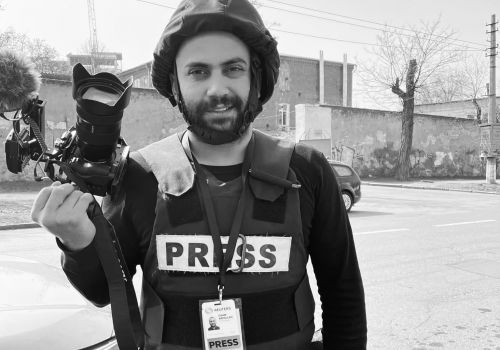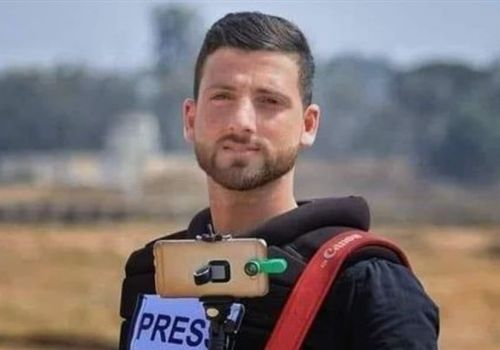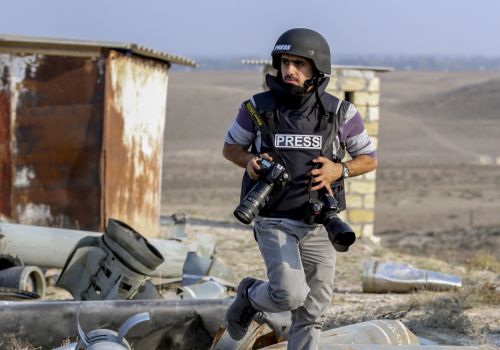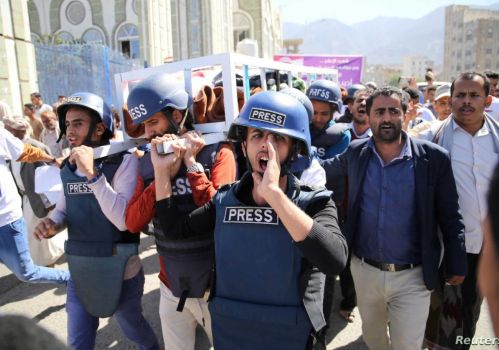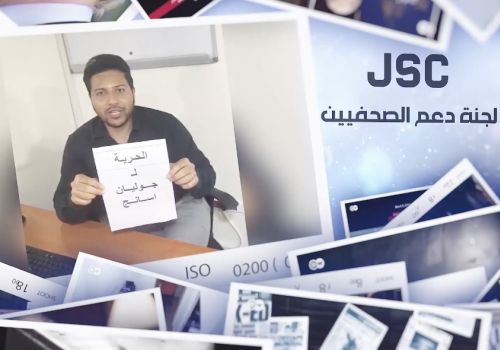Why mobile journalism is modern journalism
2022-06-16 11:07
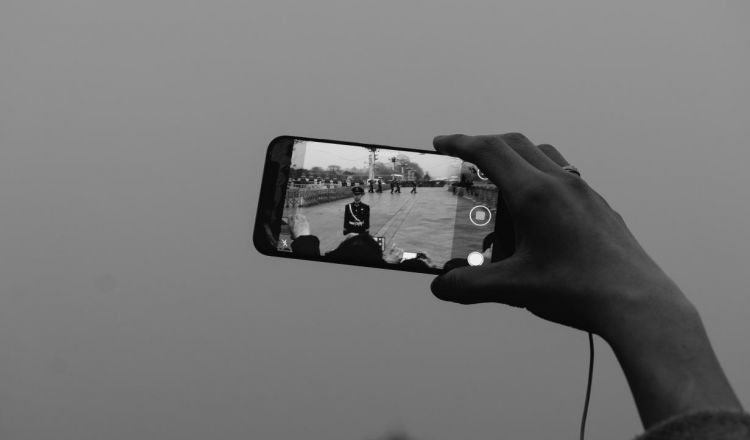
More than five billion people have mobile devices today, with studies suggesting that over 70% of internet users will be accessing the internet solely through their smartphones by 2025.
The growing population of smartphone users is changing how we see and consume information: from the filming of police violence in the U.S. to using smartphone text chains to evade government censorship in Zimbabwe, mobile journalism, or “MoJo,” is using the ubiquity and ease of use of smartphones to empower an entire new generation of journalists.
Today, we released a new toolkit, available in English, Arabic, French and Portuguese, that includes eight social media-friendly videos produced by Seen (formerly Hashtag Our Stories) with tips to help reporters globally improve their mobile journalism. I sat down with Seen co-founders Yusuf Omar and Sumaiya Omar, as well as Community Lead Charlotte Maher, to discuss journalism in the age of smartphones and why reporters should consider the possibilities of mobile journalism:
IJNet: What advice would you give someone just starting out in mobile journalism?
Yusuf Omar: There is so much low-hanging fruit that is ripe for the taking. There’s a huge digital opportunity, and traditional media organizations are slow and unable to move quickly. So there’s a massive opportunity for young people to say, we’re going to help fix these legacy media organizations, or we’re going to form our own company.
Young journalists too often wait for someone to give them the opportunity on a plate. If you want to be your country's best food reviewer, you have a mobile phone in your pocket, what are you waiting for? If you want to be a travel reporter, go out there and start traveling.
It’s a cliché thing, but there’s also that 10,000 hour rule. We did 200 videos on Facebook before anything remotely went viral. Today, we do 1 billion views a year, we have 5 million subscribers, and that’s been after four years of learning. You have to start publishing: don’t be precious, just get it out there and look at how the audience responds.
Charlotte Maher: That’s the key message, that’s what we tell everyone we work with: just get out there. There are so many stories, and you have a mobile phone in your back pocket to tell them with.
Sumaiya Omar: Something we learned early on is that things can be shaky, and it doesn’t have to be perfect. Just put stuff out there, the more you do the more you understand your audience, the more you understand what people are looking for in your content.
How did your ideas behind mobile journalism start?
Y. Omar: In 2014, I had the opportunity to travel to Syria to cover the Syrian Civil War. Back then I realized two things: one, I never wanted to travel that close to a war zone again — it was prohibitively dangerous, and I feel lucky to have come out unharmed. Two, I realized how many storytellers and journalists had lost their lives there. I wanted to one day be able to train communities in Syria and around the world on how to tell their own stories. From an early point I came to the realization that training communities was a really important way to tell stories.
Before we launched Seen, Sumaiya and I traveled around the world and told everybody about this idea. There’s one particular conference when I spoke on the stage and said, “hey, the future is people telling their own stories and journalists fact checking and verifying it,” and Nick Robinson, who was the political editor of the BBC, said to us, “curating selfies isn’t journalism.”
This was a huge moment for us. You can come out of that conversation disheartened, but it did the opposite for us – we realized that they didn’t get it. The biggest news organizations in the world think that people with mobile phones are a threat to democracy, but we think they’re the future of democracy and journalism. Today, the president of Ukraine is giving us updates from the frontlines with a mobile phone. So a huge, huge moment in our founding story was telling the whole world about mobile journalism — and nobody listened to us.
Why is this toolkit valuable for journalists?
Maher: The value is really in the audiences you reach. To engage young, and new audiences around the world, you need to offer something different. You need to be offering something unique, especially to stand out on social media platforms, which are saturated with so much content, including the fact that you’re competing with celebrities and influencers as well on those platforms.
What I tell newsrooms is that, being able to do MoJo allows your reporters to, when they’re out on the field, capture different kinds of content all in one. You can go back to the office and you might have to make a video for social, a video for television, an audio package for radio, you come away with a whole package of content.
Y. Omar: Traditional media [outlets] are trying to fix the car while driving the car at the same time, and that’s difficult. Our modules, or toolkits, have been able to make that process a lot easier by learning from our mistakes.
Looking at these IJNet toolkits, they’re coming from the place of a publisher, not a training company. That’s a huge difference. All the learnings are inspired by stories that we published every single day. It’s not textbook stuff, it’s not theory. It’s based on what we’ve put out and what we’ve learned works on Instagram and TikTok, and how young audiences are responding to content.
You were previously known as “Hashtag Our Stories” and are now “Seen.” Why the change?
Y. Omar: Some of us have come from traditional media backgrounds — I was previously at CNN, Charlotte was previously at the BBC — and we’ve all seen how, in some respects, traditional media has failed us in two key areas. One, an obsession with negativity, and two, a critical lack of diversity in the newsroom. How on earth do you cover a big, interconnected world? We believe the way to do that is to empower [diverse communities] to tell stories, to provide them with the tools to build professional quality journalism, and to curate them into shows that can be fact-checked and verified.
Imagine a massive iceberg and just the top of the iceberg is above the water, and that is the user-generated content that is being curated by traditional media. Its the viral videos, it’s terror attacks — that’s the stuff that’s bubbled to the top. We see that below the surface, there’s 3 billion mobile phones around the world. That’s diversity, that’s what’s really going on, that’s what is happening in communities around the world.
We’re all about helping those people below that surface be seen, and the truth of the matter is that social media platforms have given you the opportunity to share your story, but they haven’t told you how to tell your story. That’s an interesting place to be right now. It’s about telling people how to tell a story, and in the process they are seen and heard, and in the process we can create a more empathetic and understanding world.
S. Omar: A big part of what we do is unique stories and [empowering] people that are unheard and unseen. Our new tagline is, “I am seen, are you?” That really encompasses what sharing a story means: it means that they are able in some small way to be heard, seen, and share their stories.
This interview has been lightly edited for length and clarity.
Interested in mobile journalism? Check out our mobile journalism toolkit for tips on reporting using your smartphone.
Photo by Markus Winkler on Unsplash.


